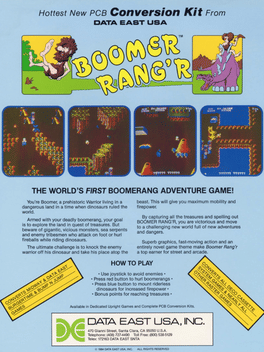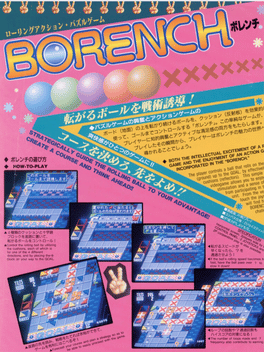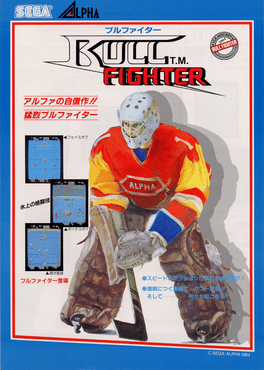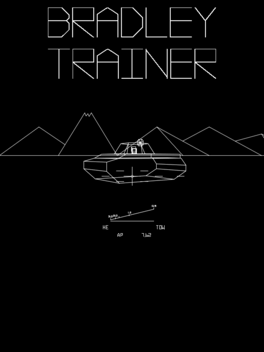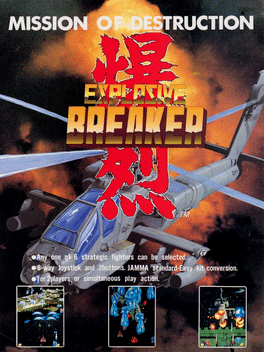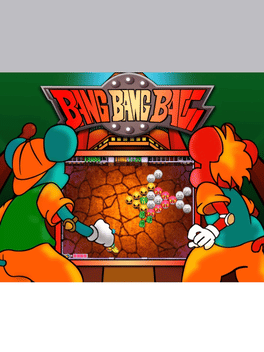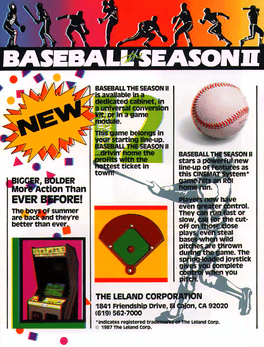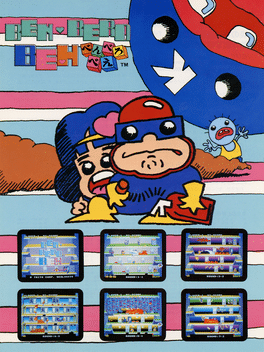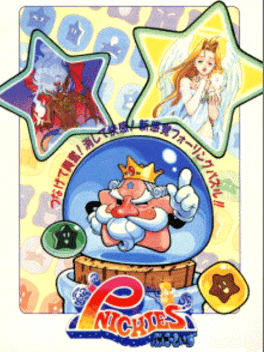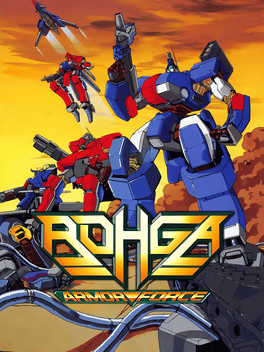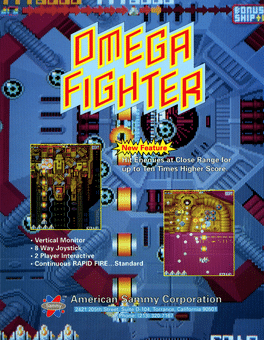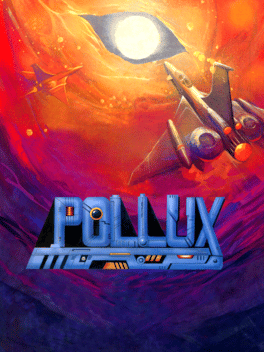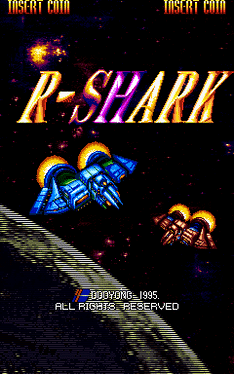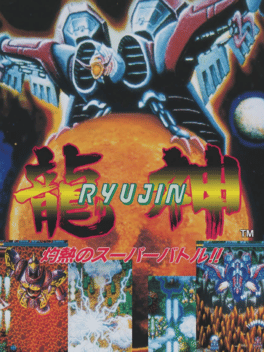Most Popular Arcade Games - Page 107
-
Boomer Rang'r
1983
Boomer Rang'r
1983
A caveman runs around tossing his boomerang at enemy cavemen and prehistoric creatures. Pick up potions to spell out BOOMER RANG'R to move to next level. For even more fun, kill a dinosaur rider and mount his dinosaur! -
Borench
1990
-
Bull Fighter
1984
-
Bradley Trainer
1980
Bradley Trainer
1980
A military simulation version of Battlezone. You do not control the tank, just the turret. Enemy tanks do not fire at you. The only way to lose is to run out of ammo or shoot a friendly tank. -
Bowl-O-Rama
1991
Bowl-O-Rama
1991
This upgrade for a different Capcom bowling title contains three variations of bowling games. Some machines dispense tickets. -
Last Striker
1989
-
Bakuretsu Breaker
1992
Bakuretsu Breaker
1992
A vertical scrolling shoot'em up. Bakuretsu Breaker is an Action game, developed and published by Kaneko, which was released in 1992. -
Bang Bang Ball
1996
Bang Bang Ball
1996
A mouse holds a ball on his belly and must shoot the other balls of the same color on the screen. You and the groups of balls can move around anywhere on the stationary screen. -
Ben Bero Beh
1984
Ben Bero Beh
1984
Ben Bero Beh is a platform game where you guide a small superhero through an apartment complex on fire! Armed with a fire extinguisher, you must make your way down the levels avoiding gas explosions, crumbling floors, damaged lighting fixtures, and various enemies that pop out of the doors. The goal is to extinguish the fire and rescue Ben's girlfriend. -
Beraboh Man
1988
Beraboh Man
1988
A horizontally scrolling game with a superhero-type character who battles robots and monsters. -
Pnickies
1994
Pnickies
1994
Pnickies is a Tetris-style puzzle game, where the objective is to match coloured balls of the same colour, causing them to disappear. Balls which are the same colour link together on contact to form large shapes, and must be carefully stacked to allow access to other colours. The playfield you can see consists of six columns twelves rows high. The thirteenth row which is not visible is also used for storing balls and is counted for scoring purposes. The balls drops from the top of the screen in linked pairs in the third column, and can be of two types, those with stars and plain. The plain ones simply connect with those of the same colour, but any single colour with two stars or more in it will cause the whole linked colour to disappear and award you points. -
Rohga: Armor Force
1992
Rohga: Armor Force
1992
A good-looking horizontally scrolling shoot 'em up with a few unique features that make it stand out in the crowd. 2 players can join Team Rohga and take on the dark forces of Lagnalok in this sequel to Vapor Trail. Choose from 4 pre-built battle suits or construct your own using one of four possible parts from 3 categories - Arm, Body and Leg Unit. When your battle suit runs out of energy or is destroyed by the enemy, you will eject out of the cockpit and continue fighting. The arcade versions outside Japan have a number of things cut. There is no story intermissions between the stages and there is no stage selection leading to 4 different endings found on the Japanese version, but the game cycles through all 12 stages like in the Japanese version's expert mode. -
Tough Turf
1989
Tough Turf
1989
Tough Turf is a 1989 2D beat 'em up arcade game. According to Kurt Katala of Hardcore Gaming 101: "Considering there was very little variation amongst the Final Fight and Teenage Mutant Ninja Turtles clones that popped up in the early 90s, Tough Turf is interesting to play a game that requires a different approach, and it really is a fresh alternative to Double Dragon." -
Mad Shark
1993
-
Nostradamus
1993
Nostradamus
1993
Nostradamus is a vertically scrolling arcade shoot 'em up released by Face in 1993. Players control either Dalas (player one) or Joanna (player two) to shoot down many different enemies and then defeat the level boss to advance through the game's nine stages. According to one of Nostradamus' supposed prophecies, in July 1999, a great leader would come from the sky to rebirth an old ruler over a lost province on Earth. In the game's story, this prediction comes true in the form of an alien invasion. Originating from Saturn, the alien invasion force quickly attacks many locations on Earth in preparation for an even bigger assault and possible complete global domination. Efforts are put into the design of advanced space fighters and mecha along with the best fighter pilots - in this case, pilots Dalas and Joanna - to combat the Saturnites and dispel any further doom prophecies from materializing on Earth. -
Omega Fighter
1989
Omega Fighter
1989
Omega Fighter is a vertical scrolling shooter developed for the arcades by UPL in 1989. While similar to most shooters, Omega Fighter was unique in its gameplay, level and enemy focus: rather than flying over multiple levels, the player faced up against an enormous space battle cruiser which contained every level. Taking place in the future, an enormous alien battle cruiser/space craft carrier has attacked the Earth. The Earth's only defense lies in small fighter craft wielding great firepower with the mission of dismantling the cruiser one portion at a time before it lands. Players were briefed before every mission to destroy specific parts of the enormous ship. Destroying these parts of the ship would actually play some significance on the game's ending, but overall contributed to the player's score. The game has a unique scoring aspect that awarded the player for destroying enemies at point blank range. -
Pollux
1991
Pollux
1991
Pollux is a vertical scrolling shooter arcade game. It was developed by Dooyong and published by Atlus, released only in Asian arcades in 1991. As a part of mankind’s future space development project, an enormous, automated space station called Pollux is developed. Pollux is equipped with an artificial brain that acquires so much intelligence that it makes its own personality, gender and exceeds the minds of its creators. However, Pollux starts to dwell on the thought of evil so much that it starts attacking those it was supposed to service. The player assumes control of a space fighter pilot assigned to destroy Pollux before it takes any more lives. -
R-Shark
1995
-
Ryu Jin
1993
